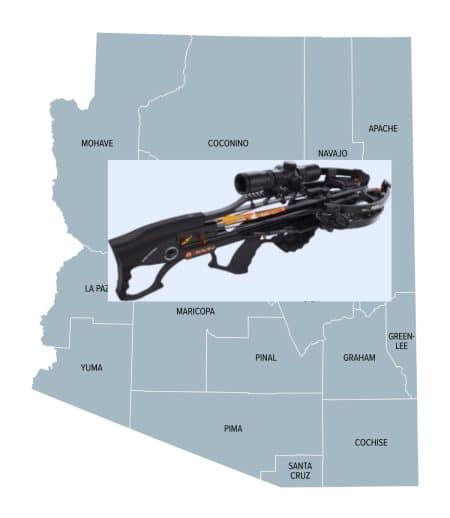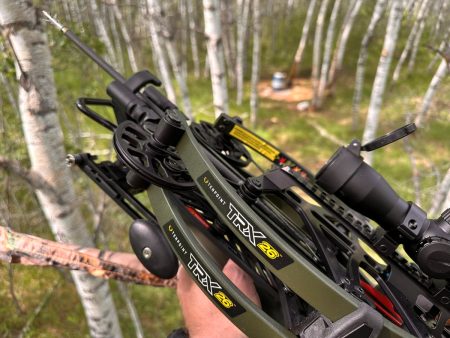Tips for ensuring you can rely on your crossbow when the mercury dips low
If you’re into deer hunting you’ll likely want to hunt the rut, which occurs in mid-November. This can also mean cold temperatures – sometimes very cold.
Crossbow hunting in these conditions is still possible, but taking a few precautions with equipment and cloth- ing, along with following a routine and staying active, will help increase your chances of success. I’ve hunted successfully in temperature as low as -36 degrees. It’s not easy – nothing with hunting is – but it makes for a rewarding bowl of hot soup when you’re done hanging the animal.
The difference between hunting and enjoying a nice winter day walk is that you have to be prepared to quickly to shoot an animal. A crossbow trigger is easy to operate with bare hands, however, squeezing a cold metal trigger with a comfy and warm winter mitt is difficult at best. You need to keep your fingers and hands warm, yet easily freed before the shot presents itself. Personally, I use finger-less gloves with a hinged cap that flips off. Make sure your trigger/safety mechanism is well greased with a lubricant engineered for very cold temperatures, to prevent the action from sticking or locking up. It’s also just as important to wear warm mitts for your hand gripping the crossbow. When possible, I keep my hands in my pockets, in addition to wearing my modified gloves, until I see an animal coming into range.
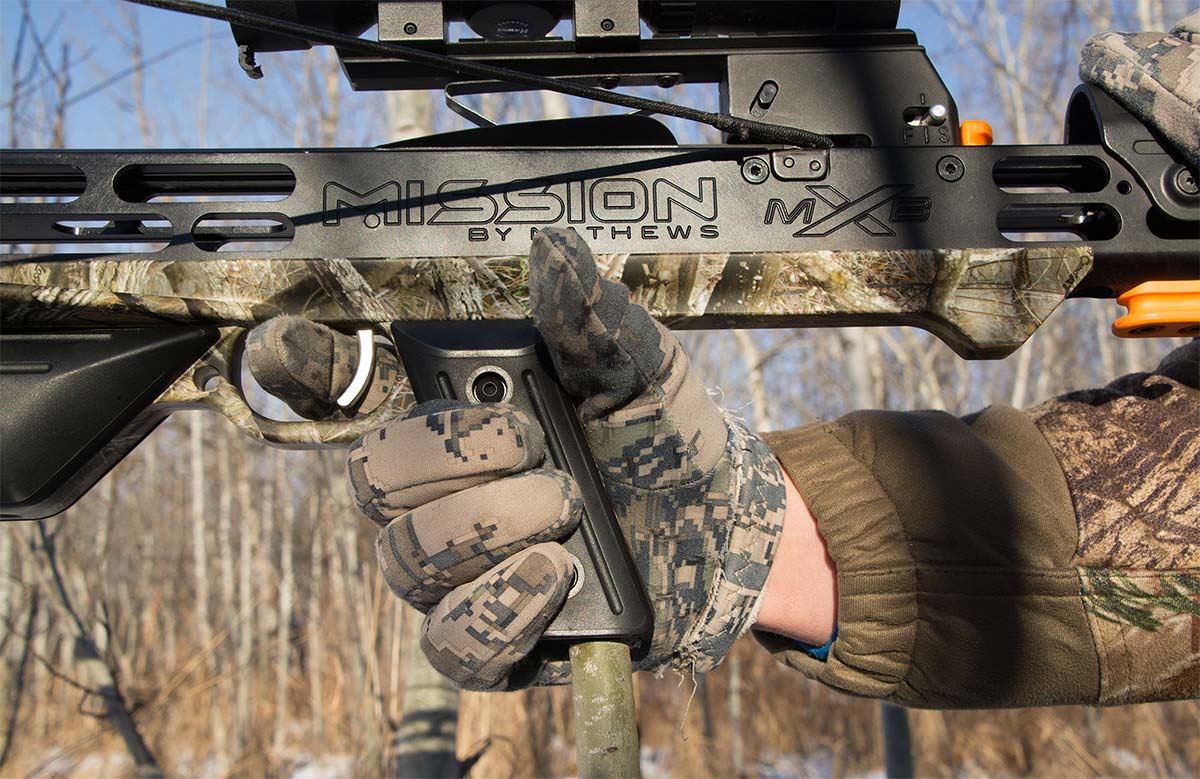
Besides keeping your hands warm, constantly checking your crossbow, rail slide, limbs and arrow for snow and ice buildup is crucial, especially if flurries are falling. Snow build up on your equipment can drastically effect your bow mechanics and arrow flight.
Whether you’re sitting most of the day or still-hunting slowly through your favorite patch of bush on blustery cold days, it’s more important than ever to dress in layers. Each essential layer has a function: a base layer (against your skin) manages moisture (sweat); next, the insulation layer keeps the cold outside air away from you skin; finally, the shell (outer) layer shields you from wind, rain and snow.
Base layer materials like polypropylene and silks are very good at wicking sweat away from the skin. The best insulation layers are made from 100 per cent merino wool because it’s breathable, quiet and comfortable. For the shell layers, remember there are few leaves on the trees when the snow falls, so you’ll most likely produce a dark silhouette outline against the snow-filled forest if you wear your all-season gear. Don’t be afraid to explore heated hunting clothing – which is great especially for those long sits. Switch your heat up using a heated undershirt and heated pant – which can be controlled. These days, there are lots of high-tech garments (including merino wool) to keep you really warm, so avoid buying bulky layers that’ll interfere and create noise when you start to position the stock to your shoulder. The great thing about hunting with snow covering the ground is tracking becomes a lot easier – any drop of blood can easily be found.
A balaclava is a great idea to cover your face and prevent frostbite on exposed skin, however, ensure it doesn’t mess up your view through your scope.
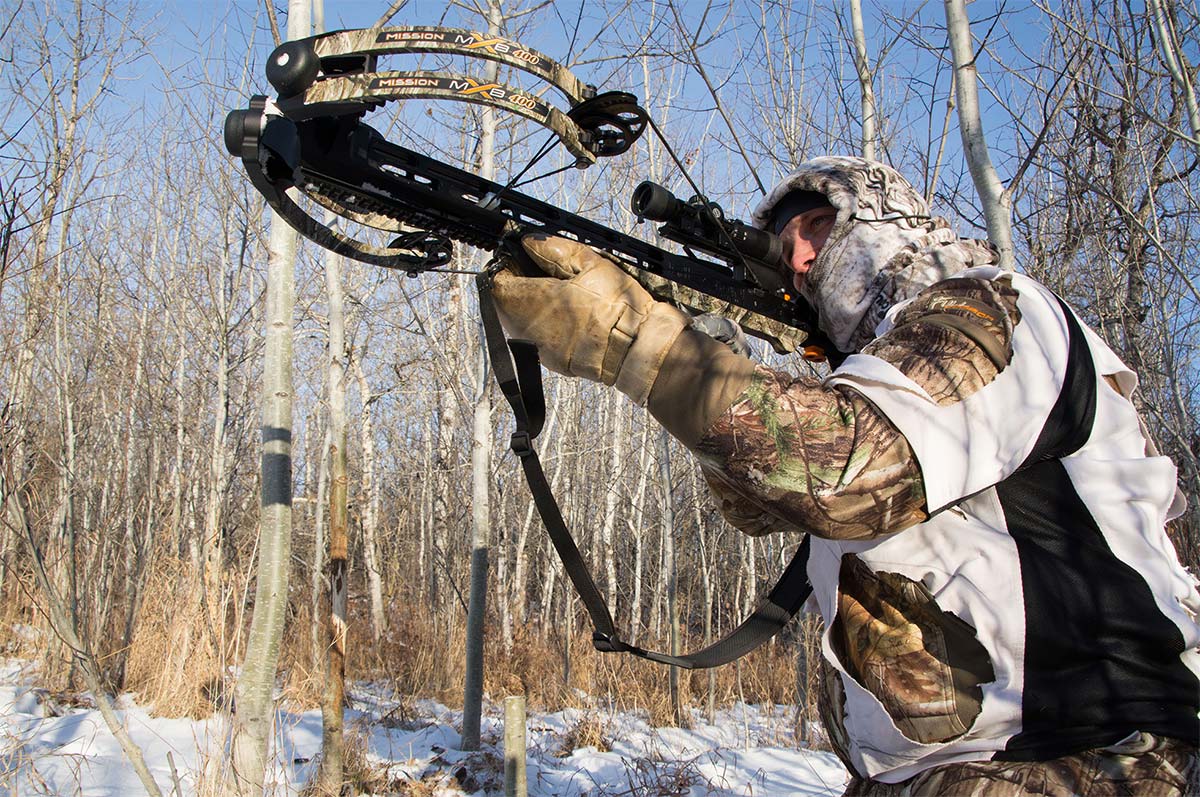
Your feet are the closest to the ground (and snow) so warm winter Pac boots are a must to keep your feet warm and dry. Layering applies to these extremities, as well. Using bama socks (thin slippers) really help keep the heat in, but you’ll need to buy boots two sizes bigger than usual and these don’t work well when walking. If you plan on sitting for the day, your feet will have less blood-flow to them, so take extra precautions to keep them warm.
Whatever you prefer to wear, practice in all the crossbow and bow hunting clothes you’ll be using, especially the facemask and gloves. These essential extra layers can easily alter your shots and form from the early season when it was
warmer. Practice realistic shooting scenarios as much as possible.
Layering your clothing allows you the flexibility to add or replace layers as necessary, to stay warm and dry. Keeping warm afield is first accomplished by proper clothing and layering (discussed above) and then using the sun, eating hot food, activity and air-activated warmers.
If you’re lucky enough to be bow hunting on a crisp, clear winter day, use the sun’s heat wherever possible: stand still in it; choose a sunny tree stand location; or still-hunt through sunny, southern-exposure bedding areas. Game animals will also try and use the sun, so hunting in these areas only increases your chances of success. If you’re into still-hunting bedding areas, look for southern slopes or areas facing south. These areas warm quicker and sooner and that’s where you’ll find the game staying warm.
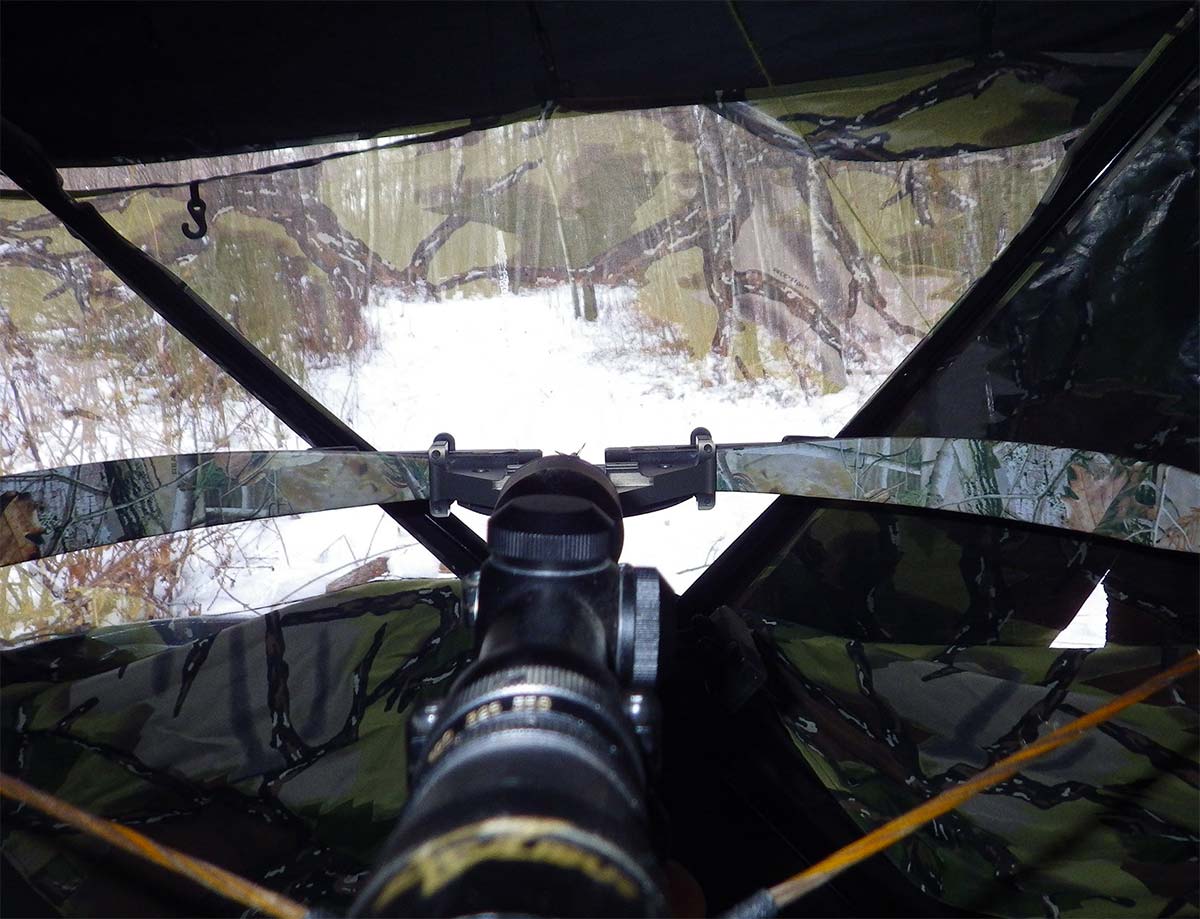
A warm snack or lunch can do wonders for keeping your core warm and fueling your metabolic rate. I pre- fer to eat stew rather than drink coffee or hot chocolate from an insulated thermos for my mid-day lunch. I find the complete meal keeps me warmer longer and I won’t have to urinate as much, thus reducing scent.
When it’s overcast or you’re hunting shady spots not exposed to sunlight, use heat packets commonly known as hot shots. These small cloth bags of iron produce heat through exothermic oxidation when exposed to air, and typically emit heat for half a day. Because they can be tricky to walk with when they’re in your boots, I always open several packets at the truck and fill up my pockets before trekking into the bush. After arriving at my post, I put one or two in each boot to keep my feet warm throughout the day.
Game animals tend to herd up in the winter, so if and when you find them there will most likely be a few of them. This isn’t always a good thing. The more eyes, ears and noses around you, the better chance of being busted. Move cautiously. Cold weather bow hunts usually take place after or during rifle seasons in most Wildlife Management Units; since the animals have already bee pressured for nearly three months, they will be particularly wary and nervous at this time. The three things the savvy crossbow hunter needs to do for cold weather success are find a food source, properly conceal themselves to ambush incoming game and wait them out.
In the late season, animals eat a lot of food to maintain their body heat and survive the winter. Bucks, bulls, yearlings and pregnant females will be trying to put on some fat before the hardest part of winter hits. Find a good food source and you’ll see game.
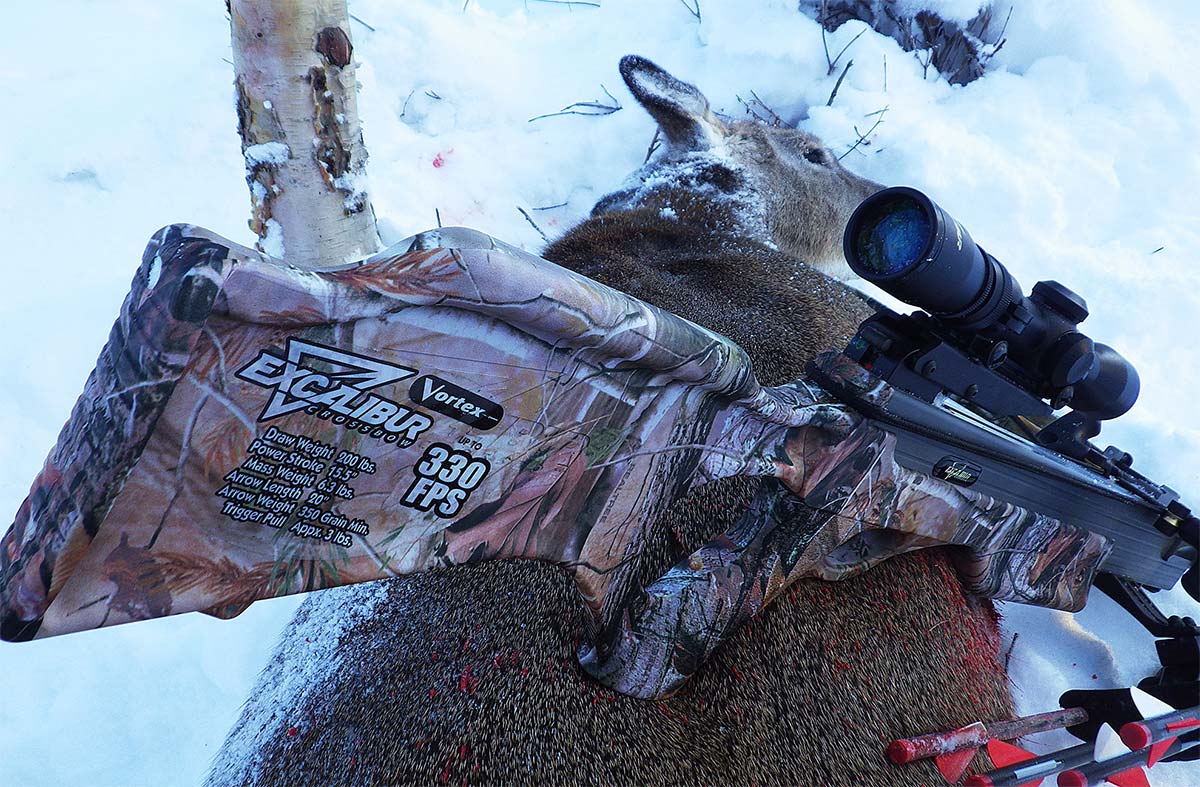
Next, find the trails leading into these food sources and you should get a shooting opportunity soon enough. Target thick cover close to food sources and set up between the food and the bedding area where the game browse before traveling on to better food. What you’re looking for is a place where a well-travelled trail widens out and scatters for a bit, probably in some cover, and then narrows down and continues to the main feeding area. Avoid walking into the bedding areas because it’ll likely be very difficult to get a quality shot with an arrow and you’ll end up spooking game. Remember that every little sound will travel further and be quickly identified as out of place at this time of year. Remove any snow in the path of our feet when you set up, as it can freeze over and squeak later if you have to move slightly. Once you have a spot picked out, it’s just a matter of putting in time – at the right time.
In cold weather, game will move in the early evening hours and the first couple hours after sunset. Then they will be in their bedding areas for the night and pretty safe. Afternoon can be a great time to hunt on cold days.
I’ve hunted frozen mornings and been in my tree stand before first light; however, many times these hunts were wasted because I was so cold I had to get down from the stand before mid-morning to warm up. Hunting the afternoons also guarantees the sun is at its highest point in the sky and the temperature is as high as it’ll get for the day.
Hunting with a partner is very effective and, where le- gal, lightly pushing can result in quality shooting opportunities for crossbow hunters. This is also an excellent method to alternate sitting and walking for small periods of time. Target daytime bedding areas and have your partner walk through slowly. You don’t want the game to flee out of there at a full speed, but rather just get up and slowly wander towards your post on a well-known trail – so pick an escape route.
My favorite method of hunting in cold weather is to sit still. I’ve found the game can’t bed all day long either, so they tend to get up and move. Setting up on well-known wandering routes in covered food sources has always produced the best opportunities for me over the years.
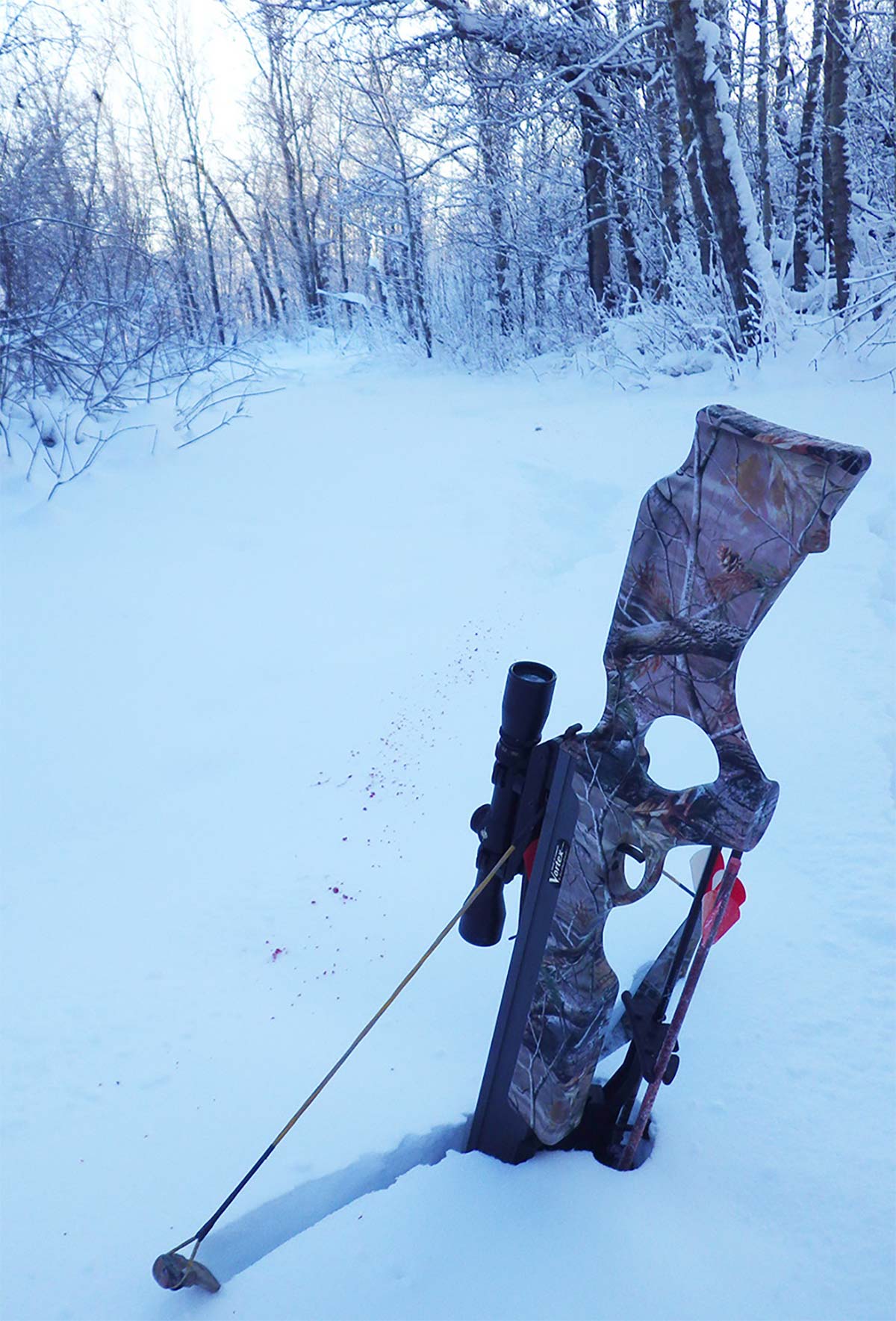
Don’t walk long distances. Walking in deep snow or hiking with your heavy Pac boots on is hard work and will cause you to sweat quickly. This is the last thing you want in order to keep warm, dry and hunting all day. Choose a nearby location and dress minimally until you’ve arrived at your hunting spot and have allowed your body to cool down a little. Now is the time to change your socks if they’re wet from sweat and add additional layers. Before I settle into position, I cock my cross- bow and load an arrow into the rail slide and then begin hunting. Unfortunately, with compound crossbows, some creaking sounds can be heard when cocking the crossbow.
Hunting with arrows when the mercury dips below zero can be quite comfortable if you’re prepared. Ensuring your equipment is working and free of snow and ice buildup is critical for making the shot. Hunting and travelling smart with proper clothing, food and a safe, smart plan will make for an enjoyable day in the field, with an excellent chance to harvest an animal. One of the great things about hunting with snow on the ground is that the blood trails are easiest to follow, so it shouldn’t take long to follow up on your shot. Shoot straight and stay warm!
PRODUCT MENTIONS:
Excalibur Crossbows • Bama Socks
Per our affiliate disclosure, we may earn revenue from the products available on this page.



